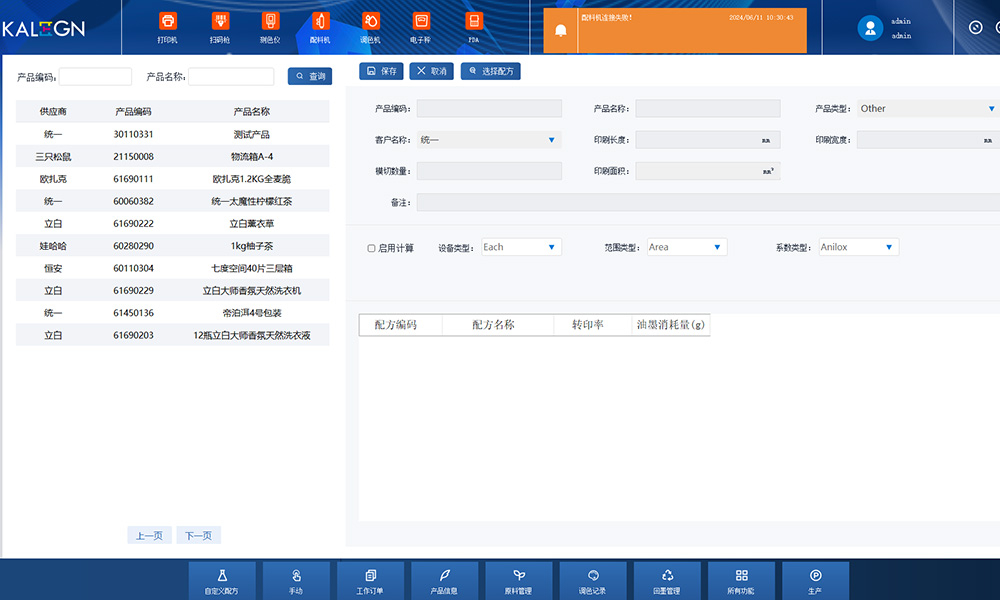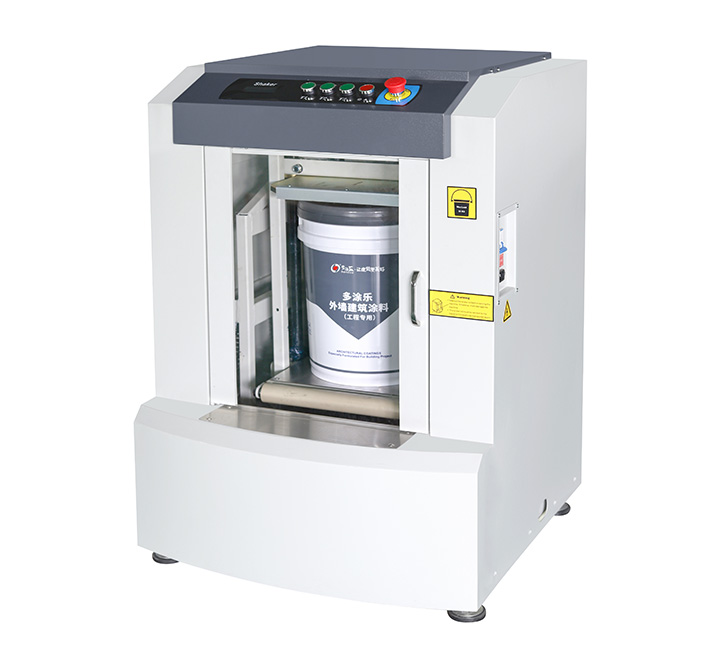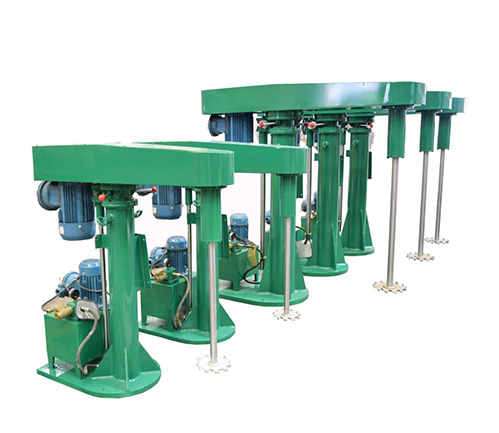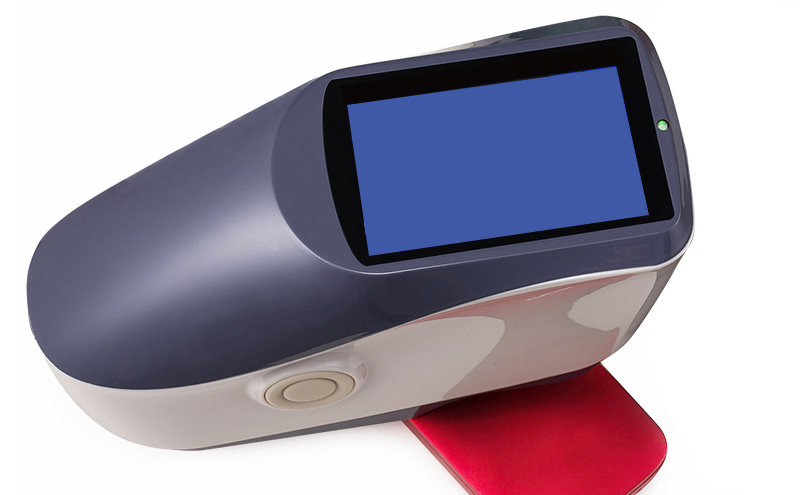Ⅰ. Color Variation— The Invisible Killer of Cosmetics Quality Control
In today’s cosmetics market, product color and appearance quality have become important factors in consumer choice. When consumers receive two lipsticks of the same shade but with different colors, or when batch color differences lead to the return of an entire shelf of products, these scenarios result in annual losses of millions for cosmetics companies. Industry data shows that over 65% of cosmetics-related customer complaints stem from color inconsistencies, while traditional manual color control methods have an error rate as high as 34%. To meet consumers’ demands for color consistency, cosmetics manufacturers must implement precise color management and quality control for their products.
Color management is a crucial component of cosmetics production, encompassing the precise measurement, blending, and control of color. SIGHTEC specializes in the color matching industry, providing the cosmetics industry with a one-stop solution that encompasses color matching, blending, and filling.

1.1 Pain Points in the Cosmetics Industry
Variations in raw material batches
Pearl powder particle size fluctuations of ±5 μm result in color difference values exceeding 0.8ΔE; products manufactured from different batches of raw materials also exhibit corresponding color differences.
Mixing uniformity
A certain foundation liquid experienced uneven dispersion of titanium dioxide, leading to a ΔE difference of 2.3 across different areas within a single bottle (the visual threshold for color difference is ΔE = 1.5), triggering a recall of the entire batch.
The Century-Old Dilemma of Manual Inspection
After continuously comparing 50 samples, the color difference identification accuracy rate of a factory’s quality inspector plummeted from 98% to 63%, highlighting the physiological limitations of traditional visual inspection methods.
Ⅱ. SIGHTEC provides a one-stop solution for color matching, mixing, and filling
1. Formulation Management Software: The “Brain” of Color
Formulation management software serves as the central hub connecting color variation meters, color matching machines, and production systems. By integrating color data, optimizing formulation algorithms, and tracing production records, it enables end-to-end digital management from “standard color setting” to “batch production color matching.”
Core Functions:
Standard Color Database Management
Stores standard color parameters (Lab target values, allowable error ranges) for each product color code, corresponding reference formulas (color paste types and ratios), and raw material batch information (e.g., specific color paste batches dependent on a particular color code).
Color Variation Analysis and Formula Calculation
Receives sample data measured by color difference meters, calculates the types and quantities of color pastes requiring adjustment via built-in algorithms, and synchronizes adjustment instructions to the color matching machine.
Production Traceability and Trend Analysis
Records color matching data for each batch, generates trend reports and assists in troubleshooting. Additionally, when changing raw material batches, historical data “correction factors” can be referenced to reduce trial-and-error costs.
Interoperability Logic with Equipment
Color Variation Meter → Software: Real-time upload of measurement data, with the software determining whether values exceed standard ranges.
Software → Color Matching Machine: If standards are exceeded, automatically generates an adjustment formula and sends it to the color matching machine to execute the adjustment.
Closed-Loop Verification: After the color matching machine adjusts, the color difference meter measures again, and the software confirms whether ΔE meets standards. If not, the adjustment is repeated until qualified.

2. Computerized Paint Tinting Machines: The Precise “Color Alchemist”
The color mixing machine serves as the “first line of defense” in color control. Its core function is to ensure that the initial color of each batch of material matches the standard color through precise formula execution and real-time calibration, thereby minimizing the risk of color discrepancies from the source.
Core Functions:
Automated formula execution to eliminate human error
Modern color matching machines (such as computerized color matching systems) use pre-set standard color formulas (including the types, proportions, and addition order of pigments/color pastes). Servo motors or precision pumps control the addition quantities of each component (with accuracy as high as 0.1g or even higher), eliminating subjective errors from manual weighing and mixing (such as visual judgment deviations or insufficient weighing accuracy).
Real-time spectral detection and closed-loop adjustment
SIGHTEC color matching machines can be combined with spectrophotometers and integrated with spectrometers to detect material color parameters in real time during the mixing process and compare them with the standard color database. If deviations occur, the system automatically calculates the type and dosage of color paste to be added, forming a “detection-feedback-adjustment” closed-loop system to ensure that the color difference index between the final mixed color and the standard color is controlled within industry-accepted limits.
Raw Material Adaptability Adjustment
To address minor color fluctuations in different batches of raw materials, the color matching machine can dynamically adjust the formula using pre-set “correction coefficients” to prevent raw material variations from affecting the final product.
Key Function: Precisely measuring and mixing trace amounts of pigments, color pastes, or other colorants into the base material (e.g., emulsion, foundation base). This is the starting point of color production, ensuring the accuracy of the initial color.

3. Mixer/Homogenizer – Achieves microscopic uniform dispersion and stable color
Core Task: Applies high shear force, impact force, and friction force to the mixed mixture after color adjustment, thoroughly dispersing pigment particles, uniformly dispersing them, and stably suspending them in the base material to form a uniform, stable emulsion, suspension, or paste.
Core Functions:
Powerful Dispersion/Homogenization: Utilizing high-shear rotor-stator structures, colloid mills, high-pressure homogenization valves, or three-roll mills, this process forcefully breaks down pigment agglomerates to achieve the desired fineness, ensuring consistent color intensity with no visible particles or color spots.
Thorough mixing: Using stirrers, anchor paddles, etc., to ensure uniform macro-level flow of materials throughout the container, preventing separation or layering caused by density differences. Vacuum homogenization also removes bubbles, preventing them from affecting color observation or product stability.
Process parameter control: Strictly control homogenization/stirring time, speed, temperature, vacuum level, and other parameters. These parameters directly affect dispersion efficiency and final color performance. Parameter standardization is key to ensuring consistency between batches.
Online monitoring (for some high-end equipment): Integrate online viscometers, near-infrared spectrometers, and other instruments to monitor the uniformity and key indicators of the mixture in real time, enabling timely adjustments to the process.
Eliminating “batch variation”: Ensuring complete color consistency within the same batch of material provides uniform raw material for subsequent filling.
Pre-dispersion: Pigment/powder + wetting agent/partial oil phase → high-shear homogenization → forming uniform color paste/color paste. The quality of this dispersion step directly affects the final color performance.

4. Automatic Filling Machine – Stable Transfer of Homogeneous Material to Prevent Secondary Separation
Precisely, hygienically, and efficiently dispense fully mixed and homogenized material into final packaging containers.
Core Functions:
Maintaining Material Uniformity
Filling system design must consider material characteristics:
Anti-settling/anti-layering design
For easily settling suspensions (e.g., foundation liquids containing a high proportion of inorganic color pigments), filling tanks are typically equipped with slow-speed agitators to maintain continuous gentle agitation during filling, preventing pigments from settling at the bottom of the filling tank.
Temperature control
Maintain stable material temperature to prevent viscosity changes, crystallization, or dispersion stability issues caused by temperature fluctuations.
High-precision filling
Use precision filling heads such as piston-type, peristaltic pump-type, or gravity-fed systems to ensure consistent volume or weight in each packaging container. Variations in filling volume can sometimes affect product appearance in the container (e.g., liquid level height affecting light reflection).
Minimizing shear degradation (for emulsions/gels)
The filling process should be as gentle as possible to avoid excessive shear that could disrupt the established stable emulsion system or colloidal structure, which may lead to changes in color or texture.
Batch isolation and cleaning
A robust CIP/SIP system ensures thorough cleaning of the filling line to prevent cross-contamination between different batches or colors of products.
Key role: Dispersing pigment agglomerates to achieve uniform dispersion at the nanoscale.

5. Colorimeter: Color Difference Meter – Objectively Quantify Color Deviation to Achieve Precise Quality Control
Rapidly and objectively measure the color of raw materials, semi-finished products, and finished products to replace subjective human judgment and achieve digital color management.
Core Functions:
Monitoring within and between batches
Raw material inspection: Measure the Lab values of pigments/color powders to ensure incoming materials meet color standards.
Process control: Immediately measure semi-finished products after color adjustment; automatically alarm and adjust when deviating from standards.
Final product inspection: 100% sampling or full inspection to ensure color consistency of shipped products.
Environmental light shielding:
Eliminate environmental light interference to avoid human visual judgment errors under different light sources.
Key role: Replace subjective visual judgment with objective data to achieve full-process digital control of color from raw materials to finished products.

Ⅲ. Full process control throughout the supply chain and production
Formula input & raw material inspection: Standard formulas are input into the color batching system. Key raw materials, especially pigments/color powders, must undergo strict inspections for color, fineness, strength, etc. upon arrival at the warehouse.
Precise color matching: The color tinting paint machine precisely measures and mixes the ingredients according to the formula to produce a preliminary mixture.
Efficient homogenization and mixing: The color mixer tool performs vigorous dispersion and homogenization of the material to achieve the pre-set fineness, uniformity, and stability standards. Intermediate product sampling and testing are commonly conducted during this stage.
Stable filling: The homogenized material is precisely portioned by the auto-filling machine under continuous anti-settling measures. During filling, initial product inspection and process sampling may be conducted to check filling volume, appearance, color uniformity, and absence of layering.
Final product inspection: The finished product, after filling and sealing, undergoes final color inspection, more precisely measuring the Lab values and ΔE values between the standard color chart/sample using a spectrophotometer, as well as other physical, chemical, and microbiological tests.
Data Traceability: All production parameters and inspection data from the equipment are recorded and linked to the production batch, enabling full traceability throughout the process. If color differences are detected, the issue can be quickly identified and addressed.
Contact SIGHTEC:
Tel: +86 181 3719 7160
Web: www.sightec.net
Email: info@sightec.net
WhatsApp Available